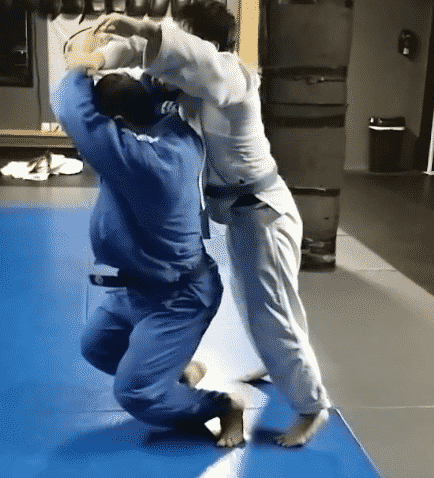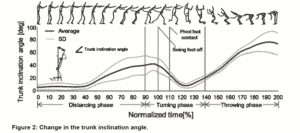
Seoi-Nage: From Concept to Application
Introduction
This is a technical writing. Don’t let this discourage you. It may seem challenging at first, but by the end of the article you will have a better understanding of the bio mechanics of the the throw, and with this a better grasp on its application.
One of the first throws taught to Judo students is Seoi-Nage. This throw has many variations – same side gripping, two-hand gripping, one handed, etc. – but all of them collectively fall into Seoi-Nage. Even though this throw is often over-simplified, it is one of the most successful Olympic throws – and one of the hardest throws to master. This throw’s difficulty is in part due to Judo coaches teaching from their own experiences, which accounts for variations on the throw when it comes to teaching and applying it a randori setting.
There is, of course, an underlying base technique that applies to the teaching of this throw, as with the rest of the Judo throws. However, there are very few articles explaining how to take the concept of the throw mechanics into action, and, more often than not, the research studies done on the technique are too technical, meant only for coaches or other scientists alike.
The throw will be divided into three stages: distancing, turning phase, and throwing phase, since those are three stages clearly identified in the scientific literature.
Energy (Metabolic) Demands
Seoi-Nage is one of the most energy demanding throws. Do 100 uchikomis non-stop and your legs will be in fire as well as shaking. This is one of the reasons why it is used for the Special Judo Fitness Test (SJFT) that calculates a judoka’s specific fitness. Since the throw involves a movement similar to that of the squat, it means that it also involves some of the largest muscles to perform it. The point in which Tori has entered and is about to raise his hips to throw is the most energy demanding point of Seoi-Nage.
Laurent Blais, Francis Trilles & Patrick Lacouture et al. calculated the total mechanical power of Tori by finding the power applied to each of the joints (14 joints of power) as:

The cumulative work calculation and thus the energy expenditure for the throw is calculated by:

The mathematical models show that the lower limbs are taxed the most during Seio Nage, many students can attest to this, followed by the trunk (rotational and vertical stability), and lastly by the arms (pulling action). During the three stages of the throw it is Tsukuri, set up for the throw, that requires the most energy, followed by Kake (throw execution) and Kusushi (unbalancing pull).

Many coaches tend to explain that the throw is predominantly a hand throw, and its initiation (by pulling action) is accomplished only by a strong action and reliance on the upper limbs. The confusion here may arise from the fact that some coaches want a strong pulling to unbalance Uke and achieve a more efficient throw by the time of entry and throwing. This may give the perceived notion that the coach believes the upper limbs do the throw when in essence they are just explaining the need to create a stronger unbalance of the opponent pre-entry.
Knowing the energy demands of the throw can allow you to tailor your training in order to maximize the muscles being used, and the motion where most of the energy will be spent. In other words do you want a better seoi-nage? Introducing squats, bunny hops, trunk stability (i.e planks), and cardiovascular training will allow you to perform or have the tools to better perform seio-nage.
First Stage: Distancing
This is the part where Tori creates the space in order to set-up and perform the throw. Tori must use his entire body, not just the arms, in order to create the unbalance needed. Initially as Tori uses his entire body there a backward tilt, this gives Tori a larger mass movement in order to move in and throw Uke, than if tori was just using the arms.
Tori executes this stage when he lifts and pulls Uke’s sleeve over and around his shoulder as he begins the rotation of the turning leg while the other leg pivots—all the while his other hand traps and controls Uke’s shoulder. The two legs realign parallel to each other, and Tori must now be completely rotated into Uke.
Tori must perform two main actions:
- Create the unbalance with an anterior-posterior tilt
- Create a vertical shift. This takes us to the next stage.
Second Phase: Turning and Trunk Position
The trunk position during seio nage is of the utmost importance; beginners tend to over-bend, as they are more worried about the throwing action rather than throwing efficiency. But as the Judoka progresses in training the efficiency and quickness of the throw becomes more important in order to perform the throw in a combat situations.
Ishii, Takanori, et al. studied the turn of Seio Nage in relation to the inclination angle of the throw in elite judokas. The level of muscular endurance, explosiveness, speed, and sport biomechanics are different (higher) than the ones found in non-competitive or non-elite judokas, thus the application of this point may vary with the level of expertise the judoka may have, or physical fitness.
It has already been mentioned that Tori must perform two main actions, create the unbalance with an anterior-posterior tilt, and create a vertical shift – that is, Tori must enter with his trunk tilted forward while at the same time having dropped below Uke’s center of gravity.
Thus the trunk angle will gradually increase as the pivot foot will come around. Once the two feet are aligned (the foot being swung and the pivoting foot) and the throw begins, the trunk then is greatly inclined forward as the hips elevate to finish off the throw. Below is the graph analyzing the trunk inclination by Ishii, Takanori, et al.

Taken from ishi et all (2012). Front-turn movement in seoi-nage of elite Judo athletes. In ISBS-Conference Proceedings Archive (Vol. 1, No. 1).
Third Phase: Throwing
Tori’s hip comes up and lifts Uke below his center of mass in order to complete the throw with some shoulder twist. Some studies have defined this movement as a catapult motion. Good scapulohumeral range of movement is necessary here as Tori’s shoulder needs to be able to have its full range of motion and strength.
A strong scapulohumeral movement is needed in order to mobilize the scapular girdle under the tension of the throw. Shoulder mobility, strenght, and lack of any decrease in range of motion will benefit the Judoka on this throw, given that elite judokas complete the movements in 0.2 to 0.26 seconds on average with the shoulder almost peaking at near 1000 degrees/second.
Thus the trunk angle seems to be able to allow Tori to throw faster since Tori has to keep a low trunk angle, and then explosively raise his hips so that the moment of inertia is minimized. This finishing movement creates a faster angular velocity against Uke at the moment of Uke’s lift-off (catapult motion).
Conclusion
Seoi-Nage is the throw of choice for coaches when it comes to new Judo students, yet it is not only a very complex throw to master but also one that requires a large expenditure of energy. The analysis of energy expenditure should elucidate a better way to analyze or teach supplementary exercises in order to make sure the student can perform the throw.
By emphasizing the analysis of the most pivotal aspects of the throw, a deeper understanding of the mechanics of Seoi-Nage is better understood. This understanding should help anyone develop a more specific training program during and outside of Judo practice in order to learn or enhance Seoi-Nage.
Further Reading
Charlote E. (2001). Rubrique technique. Morote Seoi-Nage : le principe du déséquilibre par aspiration. Judo magazine, 197, pp. 56-57.
Hirosaki, H., Suganami, M. & Hirose, N. (1989). Seoi-nage no ashi no ichi ni kansuru kenkyu (A reseach on feet position in seoi-nage). Research Journal of Budo, 22(2), 173-174.
Ishii, T., Kanamaru, Y., Ae, M., Okada, H. & Komata, K. (2011). Tai-sabaki and the body position in Seoi-nage. Bulletin of the Association for the Scientific Studies on Judo, Kodokan, 13, 87-96.

This Post Has 0 Comments